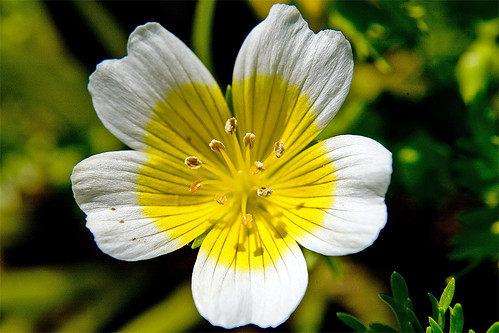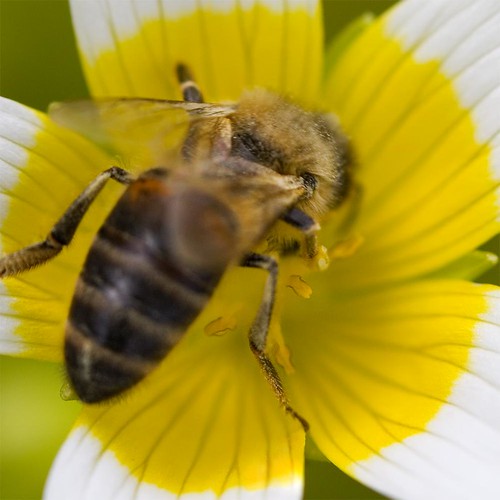Good and Bad Environmental Companion Plants

A good plant for attracting wildlife is the Poached Egg plant Limnathes douglasii. (Poached Eggplant sounds like an Aubergine recipe).
A bad companion plant would be the Black Walnut that produces a chemical and heavy shade both of which can inhibit growth.
Creating Microclimates
Hedges, trees and shrubs can provide microclimates by stopping wind. They shelter for a distance up to 10 times their height.
Roots can change microclimates by creating space for air and water to percolate. They also draw different combinations of nutrients.
Weeds try to destroy microclimates by competing for water – get rid of them!
Ponds, bog gardens and streams help make microclimates.
Environmental Companion Tips
Plant a range of different plants including local endemic species
Some plants repel or attract insects and gardeners. Plant big open flowered plants and umbellifers for hoverflies.
Use green manures when the ground is not in use.
Use leguminous plants like peas, beans and clover to fix nitrogen in the soil.
In Praise of Clover
Clover helps to fix nitrogen into soil.
Clover attracts insects
Clover adds humus when dug back into the soil.
Three Sisters
This is a planting technique combining Corn Squash and Beans in the same area.
Corn supports the climbing beans.
The beans fix nitrogen fertilizer into the soil and the squash or courgettes ramble across the ground benefiting from and providing shade.

Read also Good Companions (None J B Priestley version) and Plant partnerships
